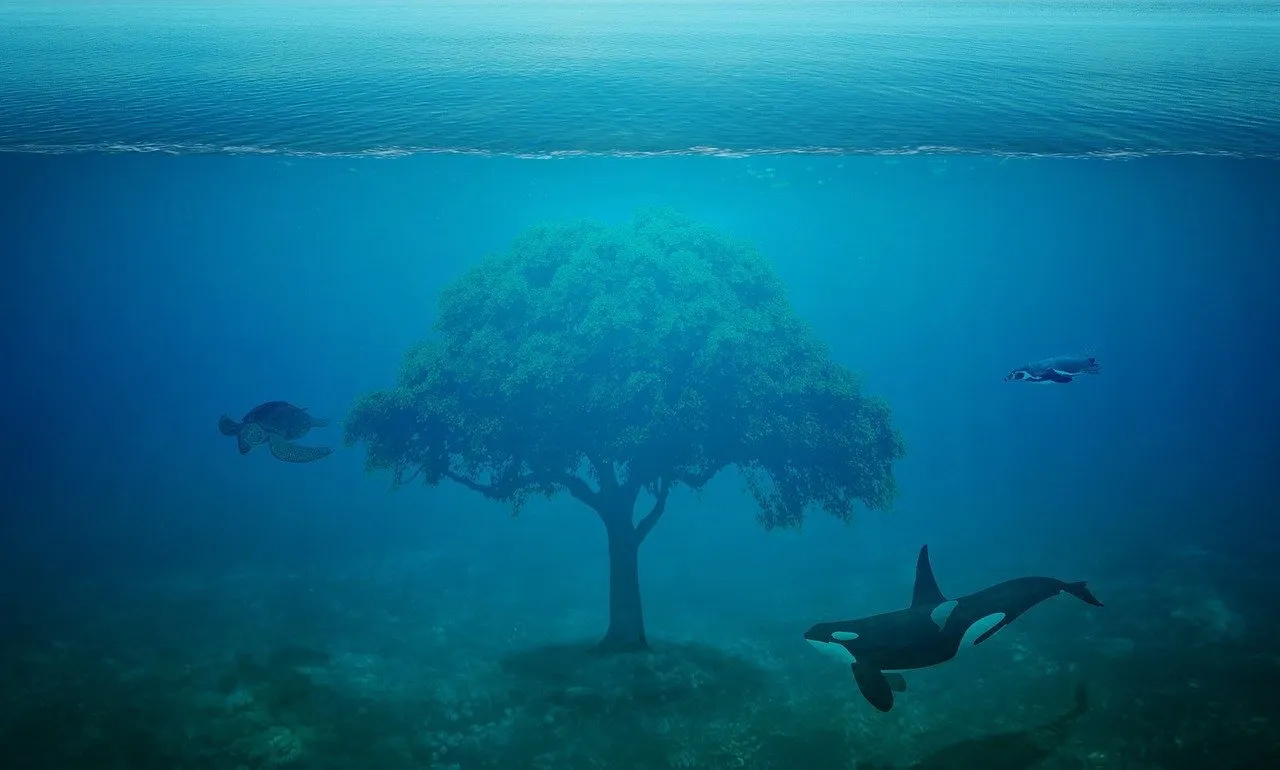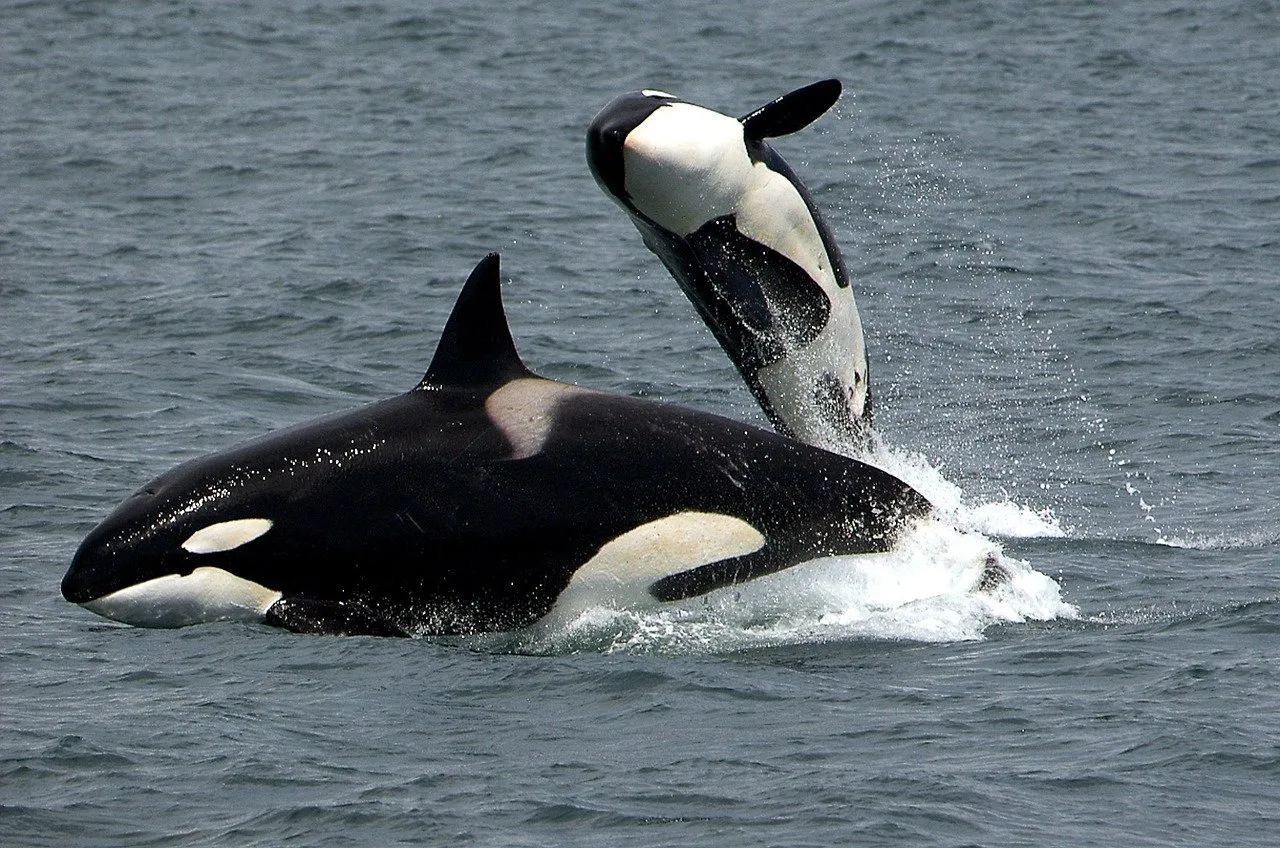ENG
Killer whales are majestic mammals, they belong to the delphinidae family and they can be found in most of the seas of the world, they can reach a depth of 1000 meters and their apnea can last up to 20 minutes.
The males can reach 10 tons of weight and 11 metres of length, whilst the females reach 7-8 tons for 5-8 metres of length, but even if that big they can move in the water reaching speed of 40 km/h during the chases.
They are social animals and live in groups called "pods" usually composed by a male-female couple, some old and sterile females and the cubs of the couple.
Thanks to their size and refined hunting techniques they are super-predators at the top of the food chain.
Their menu includes fish, seals, whales, dolphins, penguins, there are also documented cases where killer whales choose mako sharks and white sharks as prey, although they usually tend not to collide.
Although they are able to hunt practically everything that moves in the water and not, there are no documented cases of attacks in nature to the human being, the only known attacks are in fact related to conditions of captivity and particular stress.
But if it does not attack man, how come it is commonly called "killer whale"?
The answer lies not so much in their eating habits as in the story behind these animals.
In 1700 Spanish whalers contended for prey with these cetaceans and thus had the opportunity to witness their hunting techniques.
Whales hunt in groups, first they carefully choose their prey, usually a whale with its cub.
Once the prey has been spotted, the chase begins, during which one part of the group prevents the mother from protecting the cub, while the other part of the group does not allow the whale cub to return to the surface to breathe.
The chase will end with a drowned puppy and an exhausted mother, which in some cases will be let go while the cub is being torn to pieces.
Seeing these scenes the Spanish whalers began to call the whales as "whale killers", a definition that the English-speaking borrowed but translated as "killer whales" or "killer whales".
The term "killer" whale today is not appreciated just because in nature there are no documented cases of attacks on humans, even if the imprisonment of these animals can lead them to have abnormal behavior.
The captivity for killer whales is not easy, they are intelligent animals and have many needs, such as large spaces to move and hide and the ability to interact with their fellow animals.
They are very sensitive to the stress and together with the loss of the muscular tone due to the minor movement, it may cause the characteristic bent dorsal fin, which in the wild represents about the 1% of the specimens, whilst in captivity, even if the percentages are not well clear, we talk of 30-100% of the individuals.
The shows and breeding of killer whales in captivity are becoming illegal in almost all the world, thanks also to the story of the orca Tilikum (protagonist of the documentary Blackfish by Gabriela Cowperthwaite) who died after 24 years in captivity in SeaWorld park in Orlando, Florida, during which she killed three people, including two trainers and a person who illegally entered SeaWorld at night.
PS maybe I will talk about the documentary in another article.
PPS I would have loved to participate in the contest of this innovative community, but unfortunately I don't have my own photos of these animals, maybe next time 😊

Sources:
animalpedia
focus.it
wikipedia
agraria.org
ilfattoquotidiano
ITA
Le orche sono dei mammiferi maestosi, appartengono alla famiglia dei delfinidi e possiamo trovarle praticamente in tutti i mari del mondo, riesce ad arrivare a 1000 metri di profondità e l’apnea può durare anche 20 minuti.
I maschi possono raggiungere le 10 tonnellate di peso e 11 metri di lunghezza, mentre le femmine arrivano a 7-8 tonnellate per 5-8 metri di lunghezza, pur essendo così grandi possono muoversi in acqua raggiungendo una velocità di 40 km/h durante gli inseguimenti.
Sono animali sociali e vivono in gruppi chiamati "pod" composti solitamente da una coppia maschio femmina, alcune femmine anziane e sterili e dai cuccioli della coppia.
Grazie alle loro dimensioni e alle raffinate tecniche di caccia sono dei superpredatori in cima alla catena alimentare.
Nel loro menù rientrano pesci, foche, balene, delfini, pinguini, esistono inoltre dei casi documentati in cui le orche scelgono come preda squali mako e squali bianchi, anche se solitamente tendono a non scontrarsi.
Nonostante siano in grado di cacciare praticamente tutto ciò che si muove in acqua (e non solo) non ci sono casi documentati di attacchi in natura all’essere umano, gli unici attacchi conosciuti sono infatti legati a condizioni di cattività e stress particolari.
Ma se non attacca l’uomo come mai viene comunemente chiamata "orca assassina"?
La risposta non risiede tanto nelle loro abitudini alimentari quanto nella storia dietro questi animali.
Nel 1700 i balenieri spagnoli si contendevano le prede con questi cetacei e hanno avuto così l’occasione di assistere alle loro tecniche di caccia.
Le orche cacciano in gruppo, per prima cosa scelgono accuratamente la sua preda, solitamente una balena con il suo cucciolo.
Una volta individuata la preda inizia l’inseguimento, durante il quale una parte del gruppo impedisce alla madre di proteggere il cucciolo, mentre l’altra parte del gruppo non permette al cucciolo di balena di tornare in superficie per respirare.
L’inseguimento si concluderà con un cucciolo affogato e una madre stremata, che in alcuni casi verrà lasciata andare mentre il piccolo verrà dilaniato.
Vedendo queste scene i balenieri spagnoli iniziarono a chiamare le orche come "assassini di balene", definizione che gli inglesi presero in prestito ma che tradussero come "killer whales" ovvero "balene assassine".
Il termine orca "assassina" oggi non è apprezzato proprio perché in natura non ci sono casi documentati di attacchi all’uomo, anche se la reclusione di questi animali può portarli ad avere dei comportamenti anomali.
La cattività per le orche non è facile, sono animali intelligenti e hanno molti bisogni, come spazi ampi per muoversi e nascondersi e la possibilità di interagire con i propri simili.
Sono molto sensibili allo stress e si pensa che, insieme alla perdita del tono muscolare dovuto al minor movimento, possa provocare la caratteristica pinna dorsale piegata, che in natura rappresenta circa l’1% degli esemplari, mentre in cattività, anche se non sono ben chiare le percentuali, si parla del 30-100% degli individui.
Gli spettacoli e la riproduzione di orche in cattività stanno diventando illegali in quasi tutto il mondo, grazie anche alla storia dell’orca Tilikum (protagonista del documentario Blackfish di Gabriela Cowperthwaite) morta dopo 24 anni di cattività nel parco SeaWorld di Orlando in Florida, durante i quali ha ucciso tre persone, tra cui due addestratori e una persona entrata abusivamente di notte a SeaWorld.
PS del documentario voglio parlare in un altro articolo.

Fonti:
animalpedia
focus.it
wikipedia
agraria.org
ilfattoquotidiano

